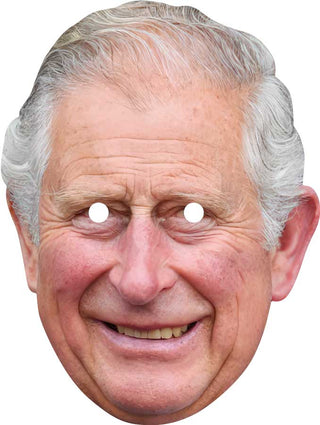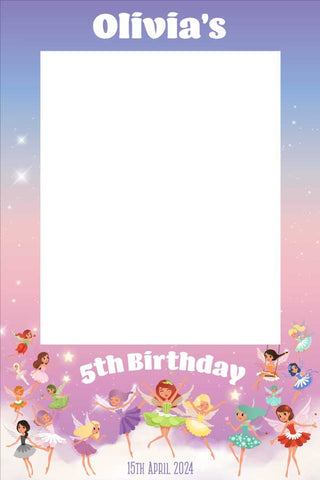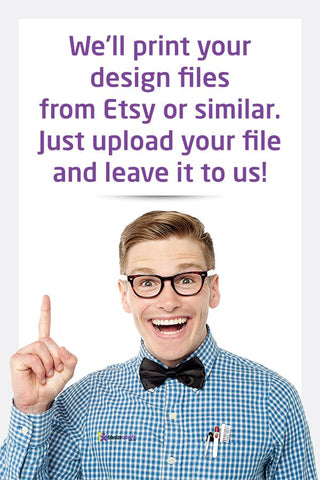Q. What size standup I should order?
A. We calculate the costs based on the print area of the standup. A single person may be 6ft (1830mm) tall and because of their stance in the photo may only be 2ft (600mm) wide - a single standard size. The same person in a different stance, with their arms outstretched for instance will take up a lot more area, so even though it's a single person standup, the latter example will be a more expensive option - extra large size.
We are happy to have a look at an image file first before you place your order to make sure it's OK to use and also as a guide to which size to order. If you order a single size and it should really have been a larger size we'll contact you regarding the price difference and whether you still want to go ahead.
Q. How big should my files be?
A. We use the latest technology in resizing images to best suit the print size ordered. However there are limitations when resizing images, for instance, resizing a web size image to print on a large standup or poster without showing some pixilating is virtually impossible.
We suggest you upload the largest files you have without resizing or cropping them first. This will give us the maximum amount of information available. We'll look at the images supplied and make a judgment as to the quality of the print.
If we feel that the print won't be of suitable quality then we will let you know. Always try and upload the original files from the camera/phone to us - without cropping, resizing, retouching or resaving. Files from Facebook are already downsized by their system for online viewing and are generally not suitable for upsizing to a lifesize cutout.
If you preview your image file, zoom into the face to as close as lifesize as possible and this will give you an idea of what we have to work with. We do some basic cleaning and general Photoshopping, but there are limits.
Q. Can I scan a photo and send to you?
A. Of course. Just follow a few simple settings and upload the file the normal way. Colour photos: scan in RGB colour at 600dpi, save as a jpg with minimum compression, maximum quality. Black & white photos: also scan in RGB at 600dpi, save as a jpg colour with minimum compression, maximum quality.
The scanners incorporated into the printers now are generally not that good for hi quality scans unless you can download their dedicated software, they are more suited to document scanning. It's much easier to go to Harvey Norman, Officeworks, Teds Cameras or similar and get them to scan them key for you.
Q. My files are RGB colour - is that OK?
A. We use totally colour managed work flows and prefer images to be in RGB. Generally unless converted, all images start out in RGB, just leave them as they are. Never change the colour profile in an image file.
Q. Can I just post my photos to you - I don't have a scanner?
A. We don't do any scanning. See Q3 above.
Q. What are the Lifesize Cutouts made of?
A. Our standard cutouts are made from high grade, white fluted cardboard (B Board) - printed on one side. The cardboard is made in Australia from 70% recycled materials and are 100% recyclable in kerbside bins.
Q. Can I wash my LifeSize Cutout?
A. Being made from cardboard, the cutouts are not washable. However, where there is ink you can wipe with a slightly damp cloth to get surface marks off (the ink is actually water proof, but not the cardboard).
Q. When printed, will my images look the same as on my monitor?
A. All our printers use fully colour managed systems to print from digital files. If your monitor is not calibrated properly, it's unlikely to be able to produce an accurate representation of the colours in your image when printed, particularly in a process colour environment as is the general printing trade. While some colours you see look great on your monitor, eg bright blues, Reds, greens or oranges, they won't print quite as bright on paper, cardboard or other materials.
Q. Do you fold the cutouts for shipping?
A. Generally we fold all the larger cutouts from around the 70cm wide or high size upwards. This is done for a number of reasons - larger parcels that are very thin and flat are very easy to be bent or damaged in transit, it is also more expensive for shipping as our items ship by cubic weight not dead weight and also attract surcharges. Being folded they are smaller and stronger. This is an industry standard practice.
Q. Will you enhance my photos?
A. Generally we will, unless we feel that it won't be necessary. If you really want the image to be enhanced, it would be preferable for you to put this in the notes section.
Q. Do I need to delete the background or crop the image?
A. You don't need to remove the background around your subject, we'll do that for you - in fact we prefer it as we know what works for us. Please bear in mind that the cutouts are cut out using flat bed cutting machines. There is a tolerance as to how fine we can cut. This means that if your subject has 'fly away hair', or has jaggy edges with the clothing outline, we have to make the best judgement as possible as to how we smooth cut. The perfect scenario is to have the subject on a light background, but this is not necessary.
Q. Do you provide a proof before printing?
A. Not as a rule, as basically we are removing the background from a photo that you have supplied... you can generally envisage how the photo would look without the background.
We do on request, or where we feel that the enhancements we have made require a final look over and approval. If a proof is needed before going to print we'll send you a proof by email for you to approve. We'll happily make minor changes and adjustments for you, within reason at no charge. Please note, this will slow the whole process down.
Q. What file types can I upload?
A. We accept different types of files on various parts of our websites, depending on the product. The upload feature will indicate the file types allowed for the product.
Please note: as an example images are generally in jpg format. If you have a jpg file, send us that, do not import the jpg into a Word or Publisher document and send us that.
Rule of thumb - send us the highest size file you have, preferably from the camera it was taken on. If you have been sent the file, the person sending you the file should send the highest size file they have, preferably from the camera it was taken on. Generally it will be from a mobile phone and generally it will be the "actual" or "original" size.
If you have produced artwork, our standard requirement is "Press Ready PDF", at 100% size. Always do a "save as" for the final file - this will reduce the file size by getting rid of data not required (the history data).
Q. Are there any additional charges I should know about?
A. The checkout will show the final price of the item/s you are purchasing. Selecting certain additional attributes (upgrades) may attract extra costs, this is clearly indicated when selecting the attribute. The only time any other additional charges may apply will be for any special work done on image files, or where you have requested some custom work and the like. We will let you know of any additional charges prior to commencing any printing and get your approval.
Q. I can't seem to find what I want, do you do custom work?
A. Yes we do. The amount of projects and ideas that can be applied to this technology is huge so we couldn't possibly cover everything on the web site. You can use our contact form to send us a message and we'll make contact back with you as soon as we can.
Q. Why do you ask for my contact number?
A. Simple - in case we need to contact you. In a manufacturing environment, things can go wrong, machines can break down, sometimes delays happen, we normally prefer to ring you with any problems. It's still easier to discuss things on the phone rather than by email or text.










